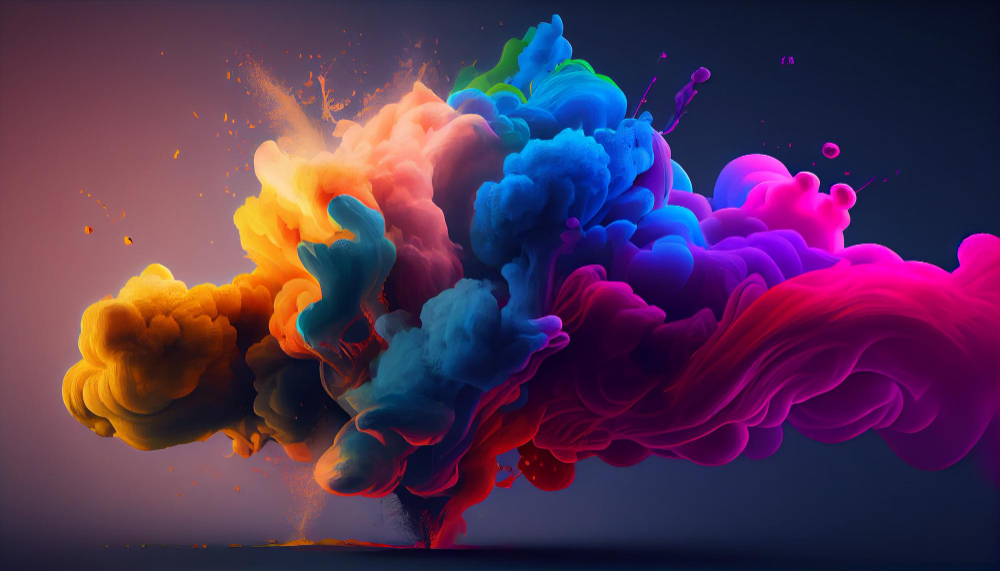Color is an omnipresent force that surrounds us in our daily lives. It graces our homes, our clothes, and even our natural surroundings. But have you ever paused to consider the profound impact that colors have on our emotions and the workings of our minds? The study of color psychology delves into this fascinating realm, unraveling the intricate connection between hues and the human psyche. In this blog post, we will explore the profound influence of color on our minds and emotions, shedding light on the power of colors to shape our perceptions, moods, and behaviors.
Color is not merely a visual sensation; it is an emotional and psychological experience. It can evoke feelings, trigger memories, and even influence decision-making. It’s a universal language that transcends cultural and linguistic barriers. Each color carries its unique energy, and our brain deciphers these energies, leading to various emotional responses.
Red, for instance, is a color that demands attention. It’s often associated with strong emotions, such as love, anger, and passion. The sight of red can increase heart rate and trigger a sense of urgency, making it an ideal choice for marketing “sale” signs and emergency stop signals. Similarly, blue has a calming effect, often associated with serenity, trust, and stability. This is why it’s frequently used in corporate logos to project reliability and professionalism.
Color’s influence on our minds and emotions is pervasive and extends to interior design and home decor. The color palette of your living space can set the tone for your daily life. Warm colors like reds, oranges, and yellows can create a cozy and energetic atmosphere, while cool colors like blues and greens promote a sense of tranquility and relaxation. These color choices can influence your mood and overall well-being, potentially reducing stress and anxiety or enhancing focus and productivity.
Colors also play a crucial role in the world of fashion. Have you ever noticed how certain colors can make you feel more confident or approachable? For instance, black is often associated with sophistication and formality, while white exudes purity and simplicity. The choice of colors in our attire can impact how others perceive us and even how we feel about ourselves. Bright and bold colors can exude self-assuredness and extroversion, while muted tones can communicate subtlety and introspection.
The influence of color doesn’t stop at personal fashion choices; it extends to branding and marketing. Companies invest substantial resources in researching and selecting the perfect colors for their logos, products, and packaging. The goal is to elicit specific emotional responses and connect with consumers on a deeper level. Think about the vibrant red of Coca-Cola, the calming blue of Facebook, or the fresh green of Starbucks – these colors are not accidental choices but carefully crafted decisions to align with the brand’s identity and message.
Furthermore, color psychology plays a critical role in healthcare and interior design. Hospitals opt for calming and soothing colors in their interiors to create a more relaxed and healing atmosphere for patients. Soft blues and greens can reduce stress and anxiety, while yellows and oranges can stimulate creativity and energy. Even in schools, color choices can influence students’ focus and performance. Warm, inviting colors in classrooms can create an environment conducive to learning.
When we delve into the realm of art therapy, we see how colors are harnessed to promote emotional healing and self-expression. Art therapists often use colors as a tool for patients to externalize and understand their emotions. By allowing individuals to paint or create with colors, they can express their feelings, navigate trauma, and find solace or joy in the creative process.
In conclusion, the influence of color on the human mind and emotions is profound and multifaceted. From the way we dress to the brands we trust, the colors we encounter every day are powerful influencers of our thoughts and feelings. By understanding the psychology of color, we can make intentional choices that positively impact our well-being and communicate our desired emotions. So next time you’re surrounded by a sea of colors, take a moment to appreciate their silent yet influential role in shaping your world.








